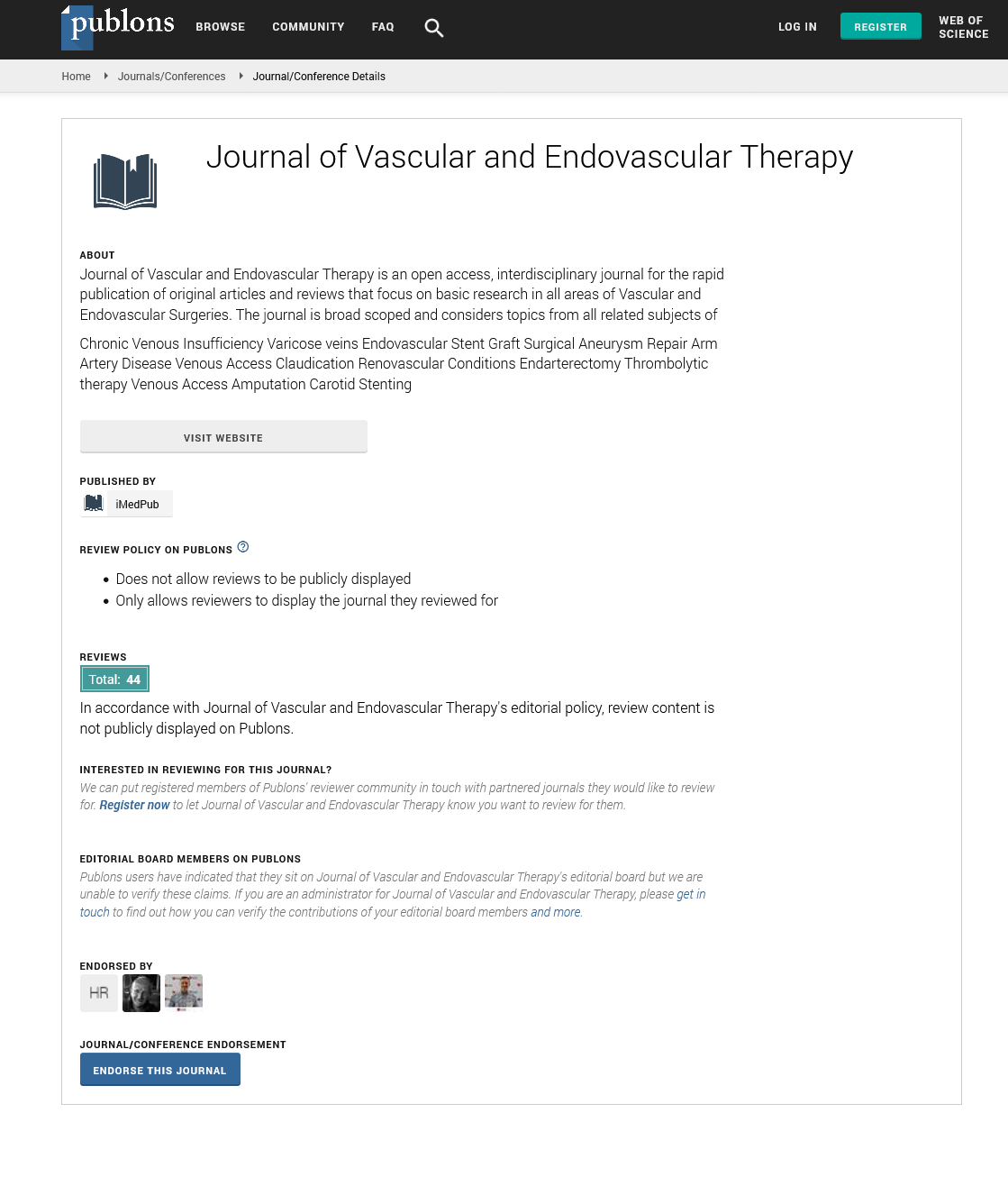Abstract
Conversion of Antegrade to Retrograde Access for Endovascular Superficial Femoral Artery Interventions Using a Failed Previously Performed Femoropopliteal Bypass Graft as a Conduit
Endovascular therapy is a common approach for superficial femoral artery (SFA)
symptomatic disease, commonly accessing the contralateral femoral artery,
crossing the aortic bifurcation. Occasionally, antegrade recanalization is not
feasible secondary to causes such as ostial SFA occlusion, wire perforation or
inability to obtain distal re-entry.
The authors report a 66-year-old woman with lifestyle-limiting claudication
caused by aortoiliac and SFA atherosclerosis, who was previously treated with
an iliac stent and a femoropopliteal bypass prosthetic graft. When her prosthetic
graft occluded about one year after its construction, an antegrade approach to
the SFA via retrograde puncture to the contralateral femoral artery was used for
revascularization. After initial attempts to recanalize the occluded SFA, they used
the prosthetic graft as a conduit to enter the occluded artery distally, eventually
converting the retrograde access into antegrade. To the best of our knowledge,
this is the first report in the use of this technique.
Using a failed femoropopliteal bypass as a conduit to access the SFA in a retrograde
manner can be safely and effectively performed especially in flush occlusions
when there is no SFA proximal stump for recanalization.
Author(s):
Luis R Leon Jr, Miguel Montero-Baker, Eduardo Espinoza, Bradley Trinidad and John Paul Pacanowski Jr
Abstract | PDF
Share this

Google scholar citation report
Citations : 177
Journal of Vascular and Endovascular Therapy received 177 citations as per google scholar report
Journal of Vascular and Endovascular Therapy peer review process verified at publons
Abstracted/Indexed in
- Google Scholar
- Open J Gate
- Publons
- Geneva Foundation for Medical Education and Research
- Secret Search Engine Labs
Open Access Journals
- Aquaculture & Veterinary Science
- Chemistry & Chemical Sciences
- Clinical Sciences
- Engineering
- General Science
- Genetics & Molecular Biology
- Health Care & Nursing
- Immunology & Microbiology
- Materials Science
- Mathematics & Physics
- Medical Sciences
- Neurology & Psychiatry
- Oncology & Cancer Science
- Pharmaceutical Sciences


